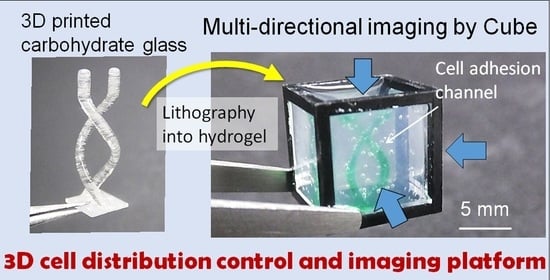3D Culture Platform for Enabling Large-Scale Imaging and Control of Cell Distribution into Complex Shapes by Combining 3D Printing with a Cube Device
Abstract
Share and Cite
Takano, A.; Koh, I.; Hagiwara, M. 3D Culture Platform for Enabling Large-Scale Imaging and Control of Cell Distribution into Complex Shapes by Combining 3D Printing with a Cube Device. Micromachines 2022, 13, 156. https://doi.org/10.3390/mi13020156
Takano A, Koh I, Hagiwara M. 3D Culture Platform for Enabling Large-Scale Imaging and Control of Cell Distribution into Complex Shapes by Combining 3D Printing with a Cube Device. Micromachines. 2022; 13(2):156. https://doi.org/10.3390/mi13020156
Chicago/Turabian StyleTakano, Atsushi, Isabel Koh, and Masaya Hagiwara. 2022. "3D Culture Platform for Enabling Large-Scale Imaging and Control of Cell Distribution into Complex Shapes by Combining 3D Printing with a Cube Device" Micromachines 13, no. 2: 156. https://doi.org/10.3390/mi13020156
APA StyleTakano, A., Koh, I., & Hagiwara, M. (2022). 3D Culture Platform for Enabling Large-Scale Imaging and Control of Cell Distribution into Complex Shapes by Combining 3D Printing with a Cube Device. Micromachines, 13(2), 156. https://doi.org/10.3390/mi13020156






